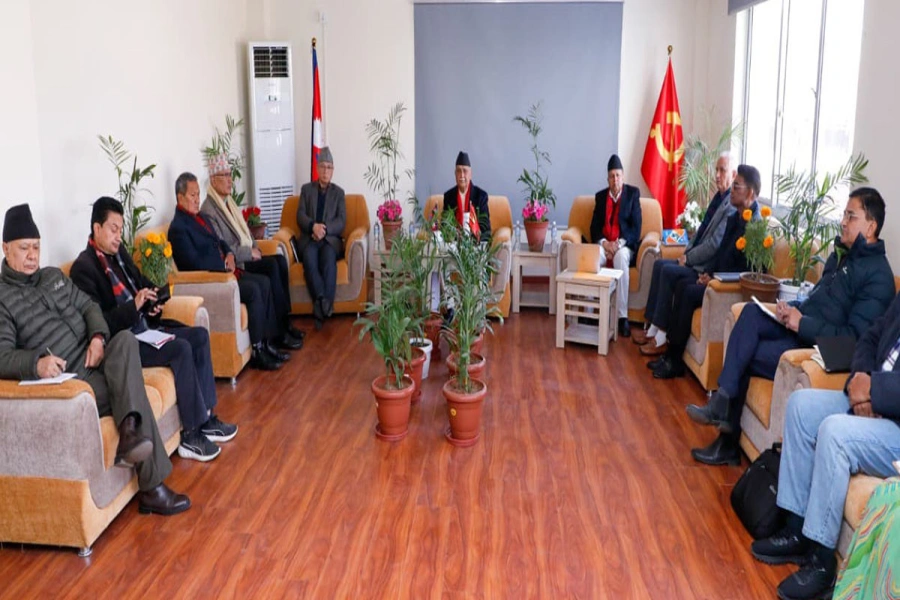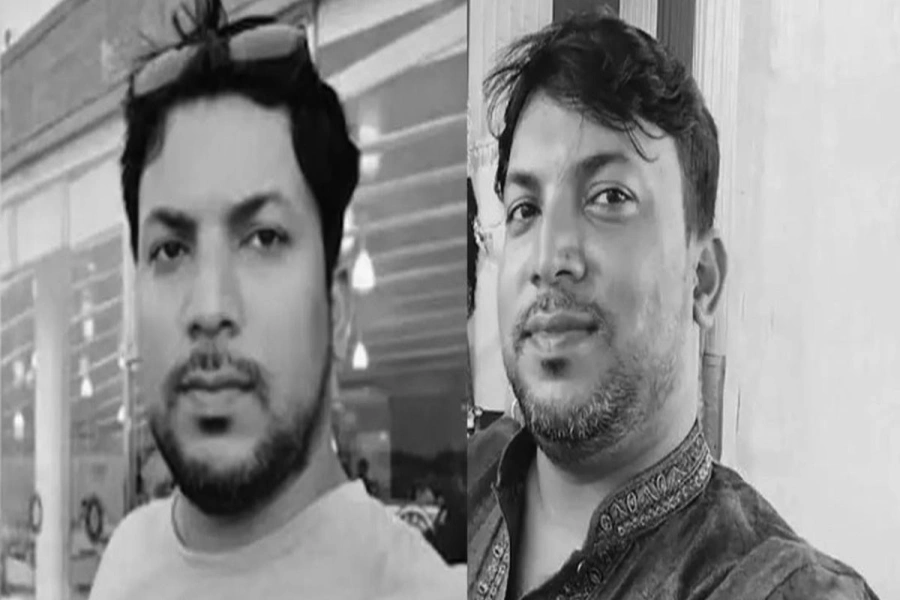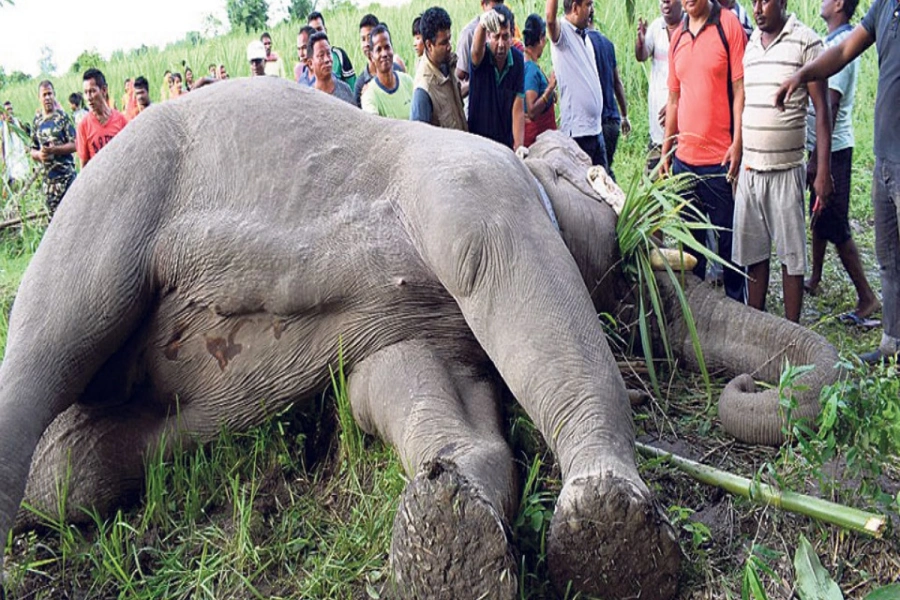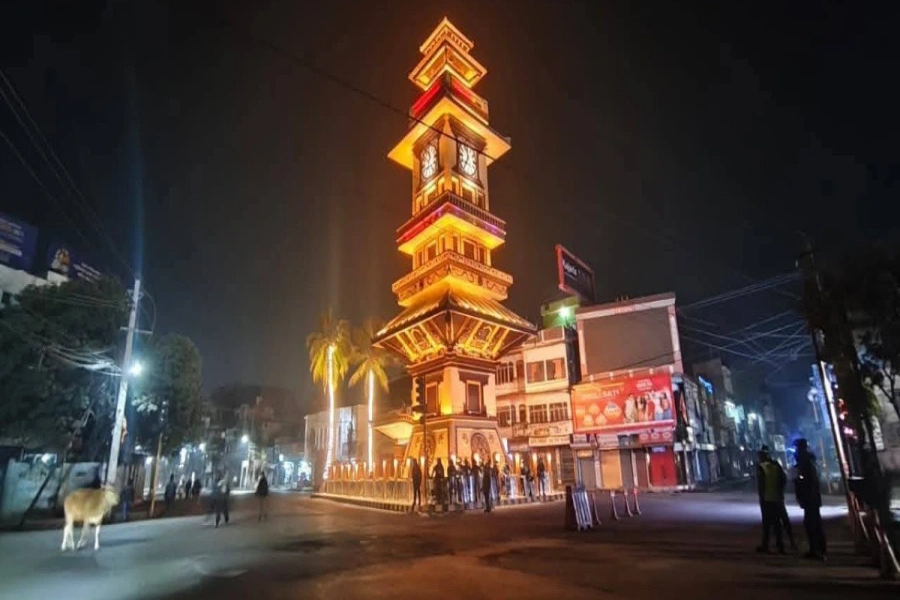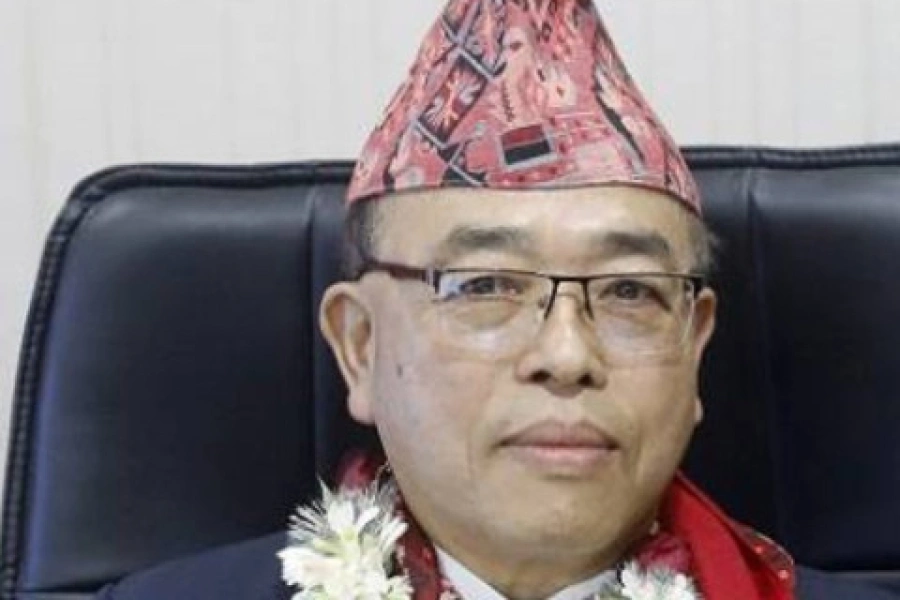Constitution of Nepal is the encapsulation of the collective will of Nepali people and contains all the novel, modern and progressive features of a democratic, inclusive and humanistic polity
As the third anniversary of the promulgation of Nepal’s Constitution, which was adopted by Constituent Assembly on September 20, 2015, is nearing, I am reminded of the excruciating trials and tribulations, and untold pain and suffering people of Nepal had to undergo, to write a document that embodied our hopes and aspirations, and our ideals and faiths, for the wellbeing of people of Nepal for generations to come.
At the same time, I am also aware of the monumental tasks that lie ahead of us in translating into concrete actions the overwhelmingly pro-people, progressive and forward-looking provisions enshrined in our Constitution.
Make no mistake. We will do what the Constitution requires of the Government, and deliver to the people peace, good governance, development and prosperity. The people of Nepal have waited long enough and will not tolerate any excuses whatsoever from this popularly elected Government—a Government of the people, by the people and for the people.
Constitution of Nepal is the encapsulation of the collective will of the Nepali people as a whole, and contains within its 35 Parts and 308 Articles, all the novel, modern and progressive features of a democratic, inclusive and humanistic polity that we have aspired for during the several decades of our political struggles and revolutions.
It recognizes the worth and dignity of every Nepali citizen, and treats every citizen equally, and guarantees fundamental rights and freedoms without any discrimination whatsoever. We deserve to be proud of this apex law of the land.
Struggle for freedom
We have had to fight protracted struggles against various forms of authoritarian regimes to secure fundamental rights and political freedoms, as the modern political history of Nepal has basically been one of struggles and revolutions in various forms. Indeed, the political struggles and movements of the Nepali people have a long and glorious tradition, emerging first as a patriotic movement for the country’s unification, and later as a struggle against British aggression.
These battles took various forms of social reforms and humanist struggles against tyranny and repression and later transformed into a democratic movement against the despotic Rana Regime.
The Nepali people’s quest for constitutionalism and democratic polity emerged from the legacy of all these streams coming into a single political movement for political freedoms, social change and transformation.
For the last seven decades, people of Nepal have tried to shape their destiny by forcing the past regimes to promulgate constitutions that limited the power of the rulers. The past constitutions were not as democratic and progressive as the present Constitution.
Constitutional history
Nepal’s constitutional history goes back to 70 years ago, with the promulgation of the landmark Nepal Sarkar Bidhanik Kanoon of 1948 by Padma Sumsher. While this first constitution in the annals of Nepal’s constitutional history must be credited with initiating the process of democratization in the country, it fell short of meeting the basic requirements that define modern democratic systems of checks and balances.
Worse, it was never implemented.
Comparing constitutions

The Interim Government of Nepal Act, 1951, which was enacted after the Revolution of 1951, created the Pradhan Nyayalaya (Supreme Court), and enlisted the fundamental rights of the citizens. But it was the Constitution of the Kingdom of Nepal 1959 that enabled the first-ever general election in Nepal for introducing multi-party representative democracy for the first time in the country’s history.
This democratic experiment, however, was short-lived as the king took over executive power by banning political parties, throttling free speech and instituting an autocratic Panchayat system under his direct control. Thereafter, Constitution of Nepal, 1962, constitutionalized the King’s coup d’etat and placed him at the center-stage of Nepal’s political authority.
This was a dark period in Nepal’s modern history.
It was against this flagrant violation of the people’s rights that the people waged continuous struggles and made supreme sacrifices for bringing back a democratic polity that would recognize the people as the repository of sovereignty and ultimate authority of the State.
As I think back to those days of utter darkness when political space was constricted, civil liberties curtailed and the people silenced with the might of violence, I vividly remember the matchless courage and fortitude of our comrades who fought against the autocratic regime without any concern for their personal safety or even for their lives. I was imprisoned for 14 long years, including four years of solitary confinement, for actively leading an anti-authoritarian campaign.
Indeed, many people sacrificed their lives at the altar of democracy and people’s rights. Indeed, for us youths living in those days, it was a call of duty that we could not say no to. It was a sacred duty for a noble cause.
And these struggles of the people culminated into the People’s Movement, 1990, that led to the downfall of the autocratic Panchayat system and heralded a new era in the democratization of Nepal’s polity. The promulgation of Constitution of the Kingdom of Nepal, 1990, should be seen against this background.
It might have been imperfect, as it proved to be in the face of a strong demand for political change and transformation impelled by the undemocratic behavior of the monarch. However, the Constitution should also be credited for re-introducing a democratic polity within a constitutional framework of civil liberties, fundamental rights and the rule of law.
The King’s misadventure in 2005 to take direct control of the administration ended the very foundation of the 1990 Constitution, which was based on constitutional monarchy and multiparty democracy. This undemocratic action of the King brought closer the Seven Party Alliance and the Maoists to stage a united front against the autocratic monarch. He was forced to accept the demand for the restoration of the dissolved parliament and give up the power that he had unconstitutionally usurped. The reinstated house issued a declaration, suspending the monarchy and making the people of Nepal truly sovereign for the first time in history. The Monarchy that ruled the country for almost two centuries and half was finally abolished in May 2008 at the very first meeting of the Constituent Assembly.
Following the end of the decade-long armed struggle in 2006, the political developments in Nepal took a sharp turn toward setting up a federal, republican and secular political order, which had been our ultimate political goals since. The accomplishment of the difficult task of the management of arms and Maoist combatants in accordance with the provisions of the 2006 Comprehensive Peace Accord paved the way for the conclusion of the peace process.
The role of the Interim Constitution of Nepal, 2007, was special: It was a stop-gap arrangement.
Nevertheless, it also pioneered many important landmarks in Nepal’s constitutional history and set the stage ready for the promulgation of the Constitution of Nepal, by the CA.
The Constitution of Nepal is not only a historic achievement of the Nepali people but also a highly progressive law of the land that has set unprecedented parallels by global standards in guaranteeing the rights of the people, particularly for the disadvantaged sections of society including women, Dalits and the poor.
Through the Constitution, we have adopted a competitive multiparty system of governance with constitutional supremacy, periodic elections, human rights, the rule of law, separation of powers as well as check and balance, and an independent judiciary.
The Constitution is also a document that embraces the vision we have for the country in the present and for the future.
We have set clear priorities for Nepal—enhancement of nationalism, institutional development of democracy, strengthening national unity on the basis of social harmony, achievement of social justice and equality by ending all forms of discrimination, inequality and suppression, and attainment of economic development and prosperity at the earliest possible.
Our Constitution has incorporated some of the social values, norms and practices handed down from generation to generation but not formally written in any previous documents.
At the same time, we focus on good governance encompassing such components as accountability, transparency, austerity and eradication of corruption as key features for prosperity and rapid development.
Birth of new constitution
Pursuant to the provisions of the Comprehensive Peace Agreement 2006, Nepal’s first Constituent Assembly (CA) was duly elected in April 2008. As the first CA was unable to deliver a constitution within the stipulated time frame, elections were held again in November 2013 to the CA which, by building on the achievements made during the first CA, fulfilled its mandate to promulgate the Constitution in less than two years’ time from the date of elections. The CA, which had 601 members, was an eloquent manifestation of our commitment to inclusive polity, reflective of our diversity. It was truly democratic in character and it followed a participatory approach to addressing constitutional issues.
There was an unprecedented unity among political parties who stood together under difficult circumstances to thwart all attempts to undermine the most democratic exercise of the Nepali people. My party remained at the forefront of safeguarding people’s right to frame a constitution and defending our country’s sovereignty and independence in taking decisions on constitutional issues and other internal matters.
The ultimate objectives of the Constitution were clear: vesting sovereignty in the hands of the people; ensuring equal rights and opportunities to the people; ensuring respect and dignity of every individual; and creating a just and prosperous society by eliminating discriminations in all its forms and manifestations. To achieve these objectives, we have restructured the State into a federal republican set-up and are pursuing a participatory democratic system of governance.
Our constitution envisages such a society, where every individual is a full and complete manifestation of his or her potentials, and he or she has every right to live a meaningful, joyful and healthy life, and enjoy full freedoms—political, economic and social—to realize his or her full potentials without any discrimination whatsoever, either on account of his or her class, race, ethnicity, caste, color, gender, religion, language or ideology. The Constitution expresses the determination to create an egalitarian society to ensure equitable economic opportunities, prosperity and social justice. It aims at building socialism by adopting democratic norms and values. And it has special provisions for affirmative action for backward and disadvantaged communities.
Further, the Constitution has restructured the country as a federal State with three layers of Governance. It provides for an inclusive electoral system with a 60-40 mix of First Past the Post (FPTP) and Proportional Representation (PR) systems respectively. The constitution also requires political parties to file candidacies for the Proportional Representation (PR) system through closed lists of women, Dalits, indigenous people, Khas Arya, Madhesi, Tharu, Muslim and backward regions.
In a significant initiative for ensuring the participation of women in state structures, women are guaranteed one-third of seats in the Federal Parliament, as well as the provincial assemblies. It also requires that the positions of either President or Vice-President of the country and Speaker or Deputy Speaker be filled by a woman. At the Local Level, women are guaranteed 40 percent representation. The recent elections confirmed 41 percent participation of women in representative bodies. This is not an insignificant achievement, and we remain committed to bridging the remaining gap of nine percent.
The Constitution of Nepal has made many important departures. It has made numerous provisions to make the State more inclusive and its polity more participative. Accordingly, the State embraces a multi-ethnic, multi-lingual and multi-cultural ethos and identity, and adopts policies based on diverse geographical specifics. The Constitution ends discrimination based on class, caste, region, language, religion and gender, including all forms of untouchability, in order to protect and promote unity in diversity, social and cultural solidarity, tolerance, harmony and peace.
There are also quite novel rights guaranteed to the people. These rights include the right to social justice, the right to clean environment, the right against exploitation, and the rights to education, health, employment, food, and housing and many others. The Constitution contains many provisions of a welfare state to guarantee the rights of every segment of society from children to elder citizen.
Thus the Constitution has been widely accepted and has gained the stamp of approval of the Nepali people because it has ensured their full rights, and charted a concrete map for creating a society wherein every Nepali citizen is happy and prosperous in line with the vision of ‘Samriddha Nepal, Sukhi Nepali’ (prosperous Nepal, happy Nepali). This is the most transformative achievement in Nepal’s political and constitutional history.
Phase of implementation
The successful holdings of local, provincial and federal elections last year brought the constitution into full operation. The people of Nepal have given the Nepal Communist Party a solid mandate to govern the country for the first time in many years. Political stability and economic prosperity have been our twin goals and we remain steadfast in pursuing these objectives.
As the elected Prime Minister, I am duty bound to ensure that the provisions of our Constitution are fully implemented true to the letter and spirit. I call upon all political leaders and fellow countrymen to sincerely and faithfully support us in this most important national task.
As we continue implementing the Constitution, several issues need to be taken into account. There are four major issues that need careful consideration and appropriate response. First, we must ensure the full implementation of constitutional provisions relating to the enjoyment of rights as enshrined in the Constitution. The Government is committed to finalizing the bills relating to the full implementation of the Constitution at an early date and get them adopted by the Parliament within the constitutionally stipulated timeline. It is important to ensure that the constitutional provisions relating to the enjoyment of rights are implemented without any delay. This will assure the people of the strength of constitutional provisions, and of their significance in fulfilling the aspirations of the people to live a life with dignity and honor.
Second, we must also manage Centre-province relations as per the spirit of the Constitution, enhance the capacity of all tiers of government, and ensure the equitable distribution of natural and fiscal resources among the central, provincial and local levels of governance. It requires great vision, strong leadership, dynamic adjustments, wideness and flexibility to achieve these objectives. The Constitution provides that the three tiers of governments are embedded in a single system of governance, albeit with different jurisdictions and separate lists of responsibilities, but within a structure of governance that seeks the support and cooperation from each other for effective delivery of rule of law, governance and public service.
We will ensure that the revenues collected by the Government of Nepal are distributed equitably among the three tiers of the Government, and that the paucity of resources will not be a constraint in spearheading the development drive at the local levels.
Third, we need to strike a right balance between equity and growth, on the one hand, and federalist structures and economic efficiency, on the other. The economic policies that we adopt should not only promote economic growth but also support equity and justice. We want to eradicate poverty from our soil and provide equal opportunities for our people to prosper. In fact, the combination of these three goals—growth, equity and social justice—is what the aspiration of people has always been. To my mind, a well-crafted and managed federal structure not only ensures economic growth but also delivers equity and justice.
Finally, it is important to understand the circumstances under which the Constitution can be amended. Constitution is a flexible document, in that it allows for amendments and adjustments as long as they don’t infringe on the sovereignty, territorial integrity and independence of Nepal, and the sovereignty and state authority vested in the people of Nepal. Such flexibility will ensure that the changing aspirations of people will always find their full expression in the Constitution. The representatives of the sovereign people of Nepal have toiled long and hard for countless years in its making. I only wish that the future generations will not need to wage such struggles—as we had to—to get their legitimate demands heard, and their genuine concerns addressed.
We believe that our Constitution will make Nepal a strong, prosperous and dignified nation, living in harmony and peace with our neighbors, maintaining cordial relations with all countries in the world, building partnerships for our development, and playing a proactive role in favor of a just, equitable and transparent world order. Our constitution has for the first time defined the elements of national interest. Our foreign policy will be guided to safeguard national interests within the overall framework established by the constitution.
Edited version of the speech Prime Minister K P Sharma Oli delivered at the concluding ceremony of the Conference on the Constitution of Nepal 2015, on August 13 in Kathmandu




